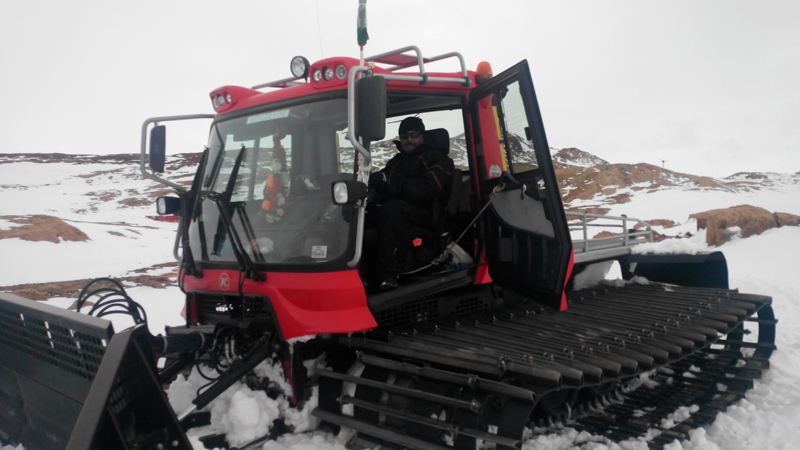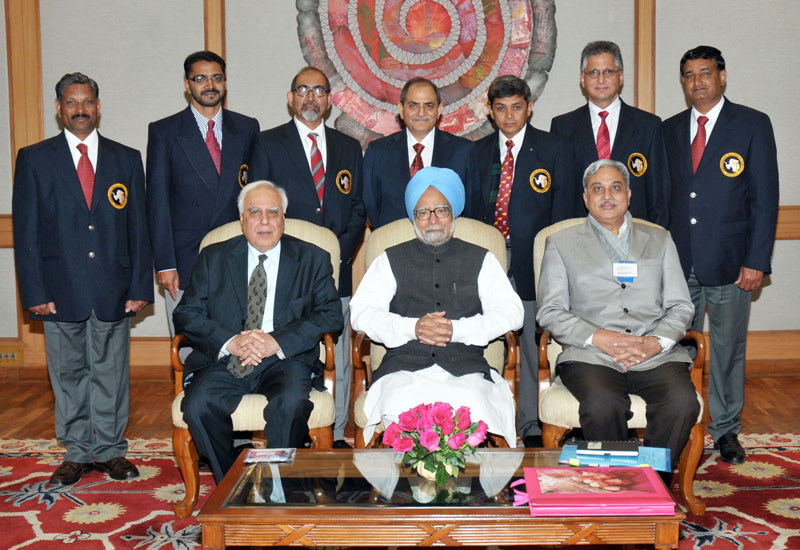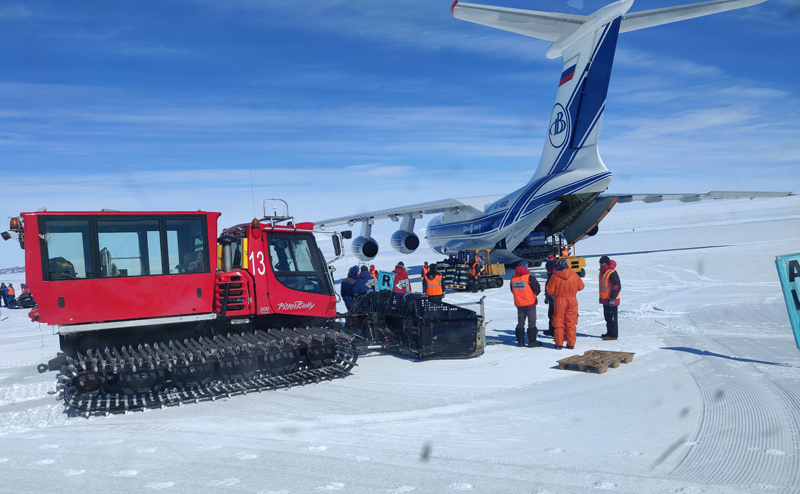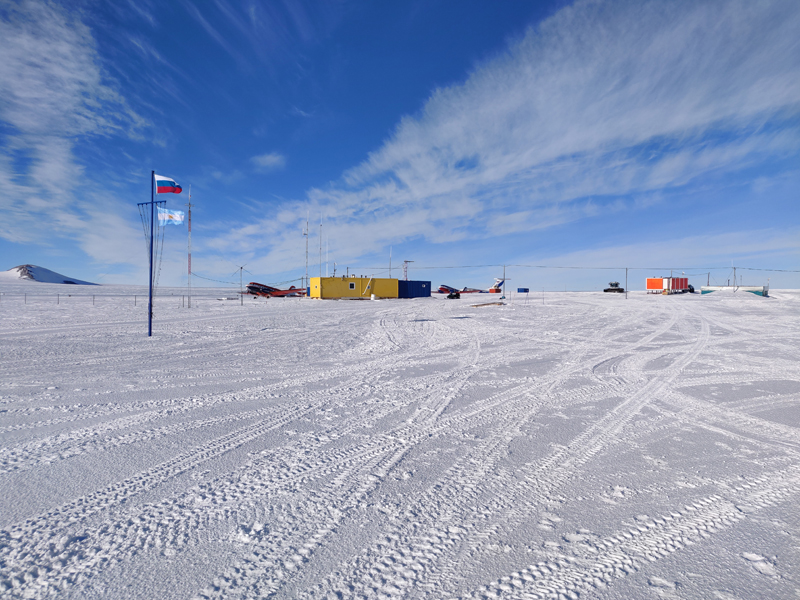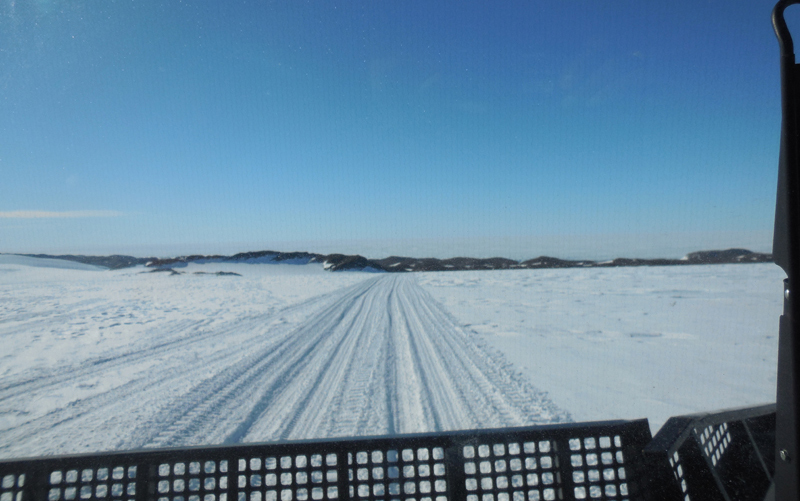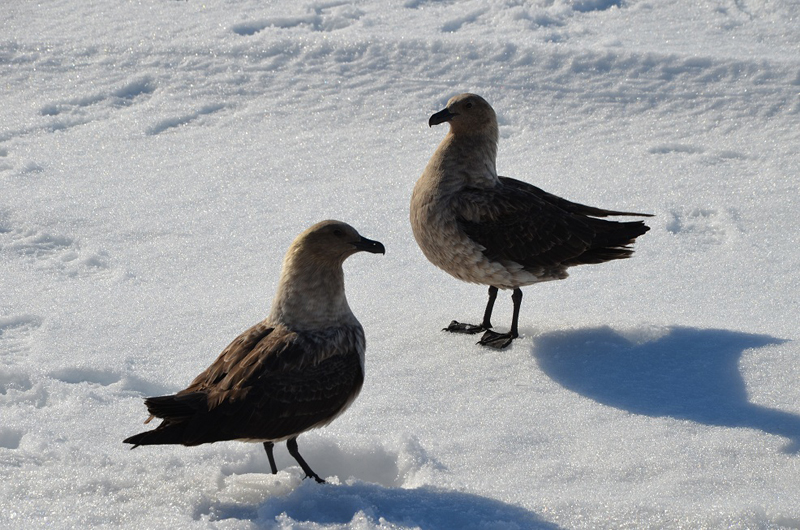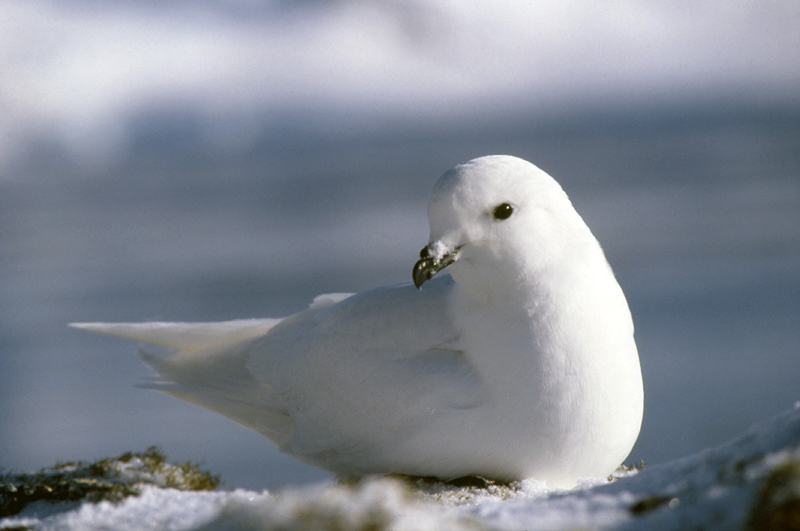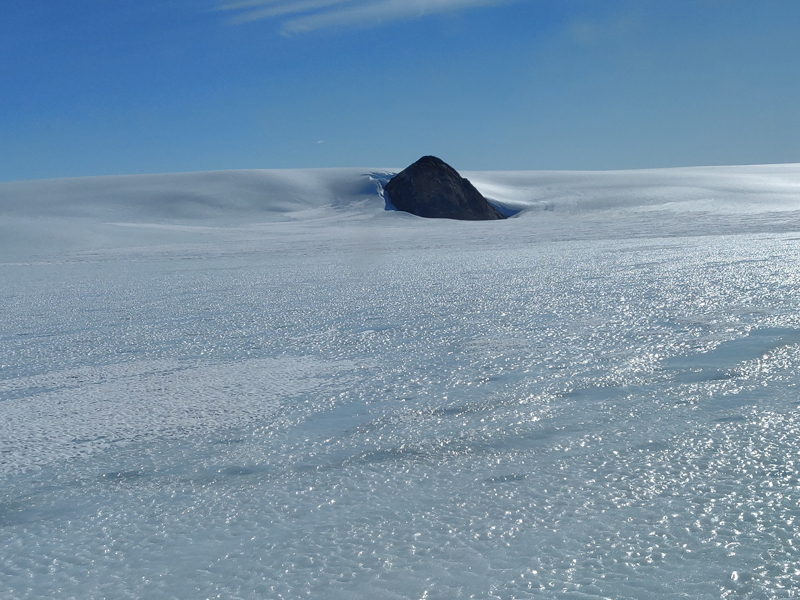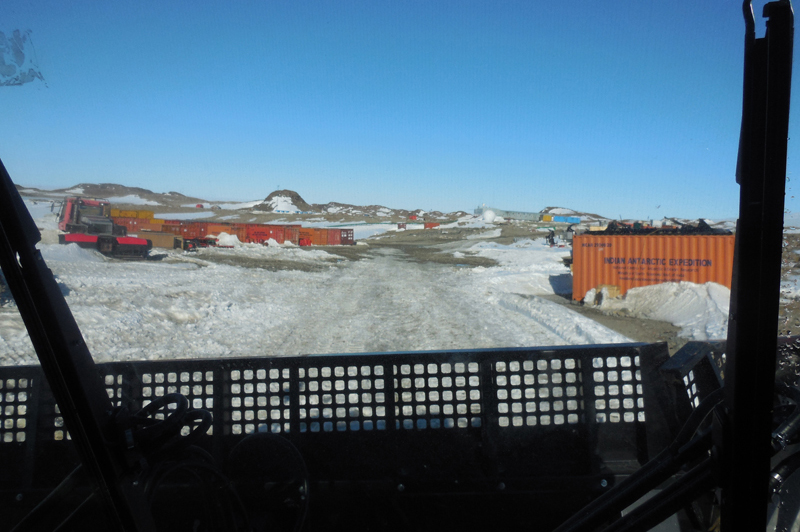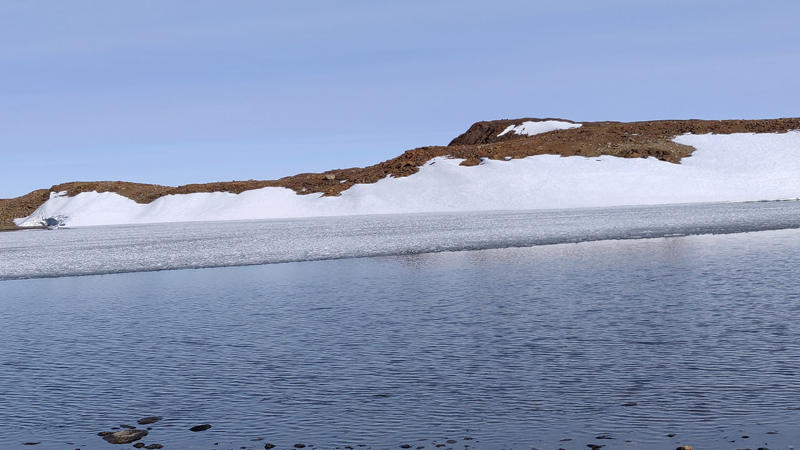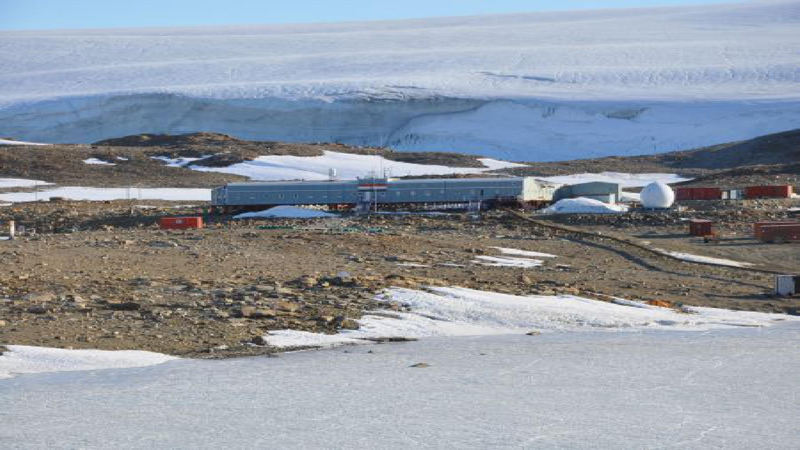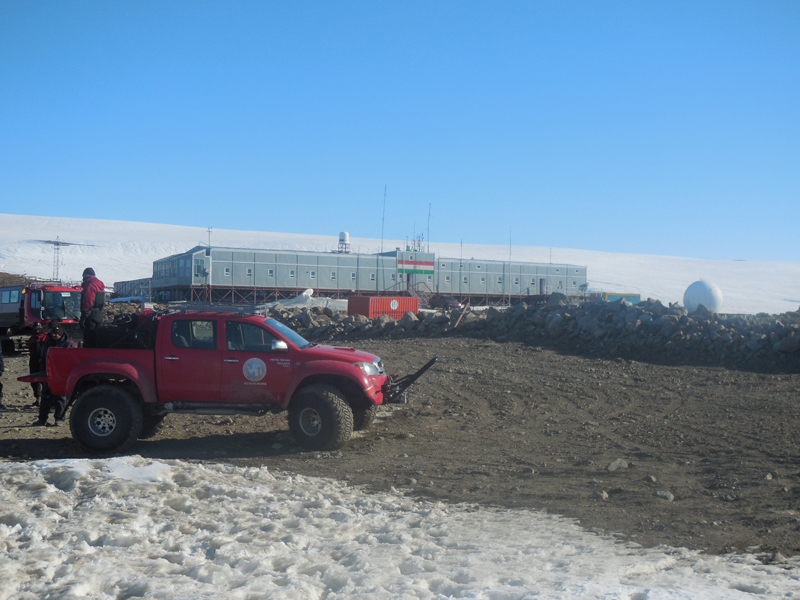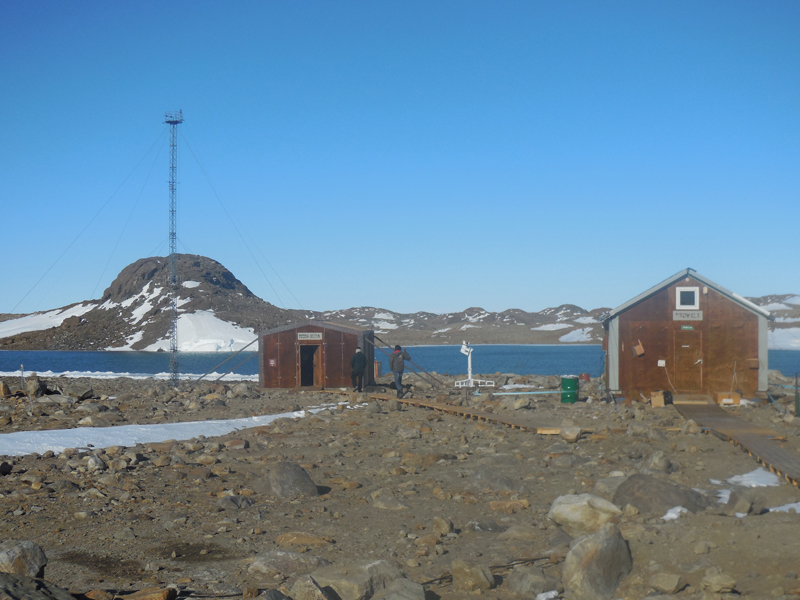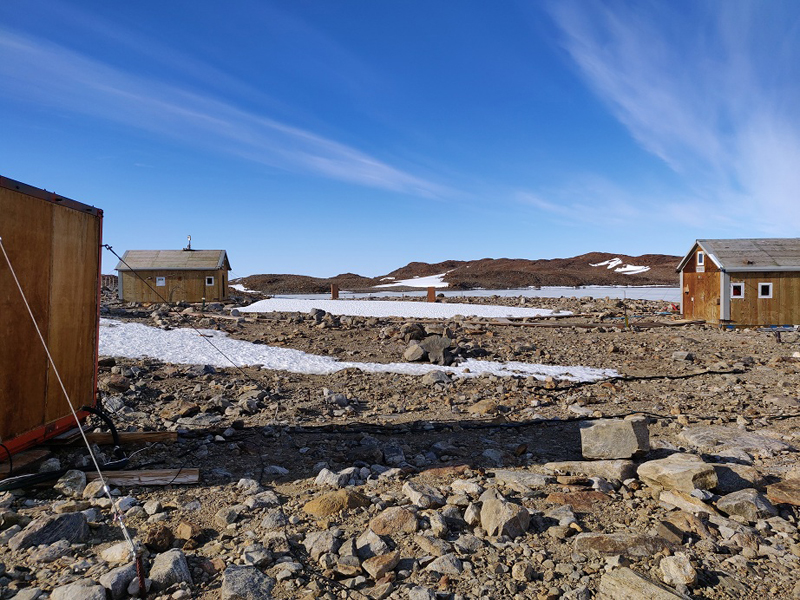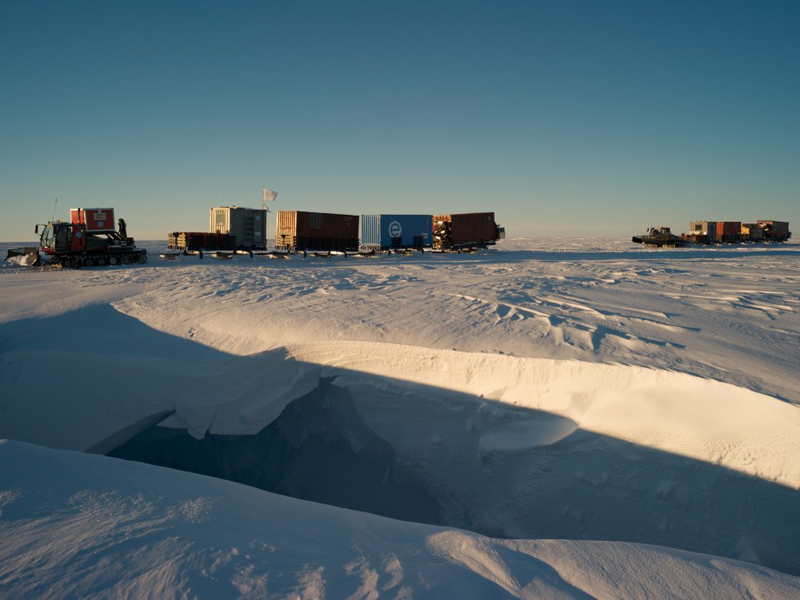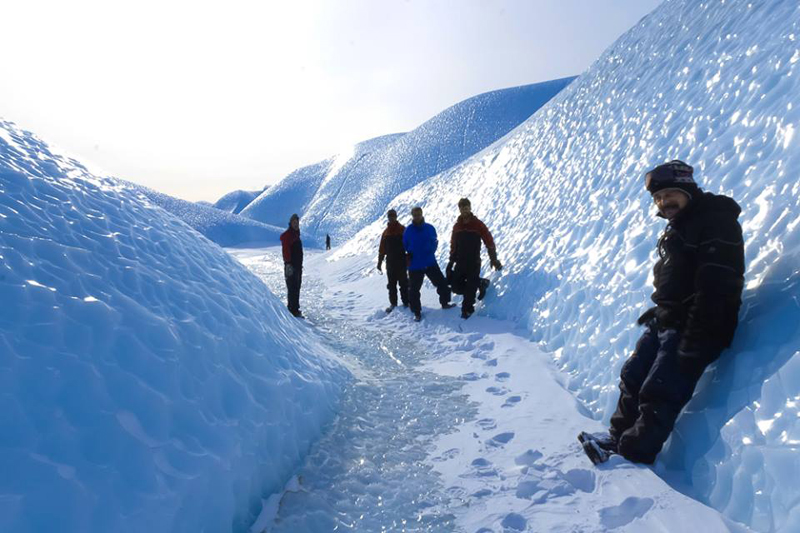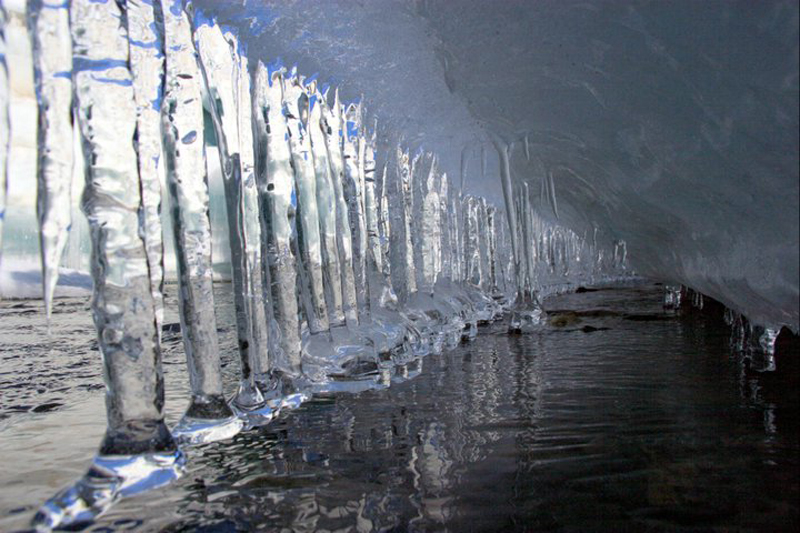The adventures had really just begun. After we landed at Novo airbase, there was a Toyota Polar truck came to pick me up.
There are multiple types of vehicles used in Antarctica. The most widely used vehicles are snow groomers which are majorly made by a company “Pisten Bully”. This is the ideal vehicle if you want to transport goods or people on impractical terrain regardless of whether it is used on mud, moor, snow or ice. The other vehicle types are snow-cats, skidoos and such. In olden days there used to be Dog Sledges but they are not there anymore..thanks to technology..
The Toyota Polar truck which had come to pick me up had glorious past. Indian government had planned an expedition to South Pole in 2010. The team of scientists and logistic personnel went to South Pole from Maitri Station on 13th November 2010 and returned on 22nd November 2010. The approximate distance between Maitri and South Pole is 2141km. This truck was part of that expedition and had successfully conquered the South Pole.
Our earth has two South Poles. One is Geographic South Pole where the Earth’s axis of rotation intersects its surface. It is the southernmost point on the surface of the Earth. It is also the site of the United States Amundsen–Scott South Pole Station. The interesting fact is that, at the South Pole all the directions face north and there are no east or west.
In most places on Earth, local time is determined by longitude. This line of reasoning fails at the South Pole, where the sun rises and sets only once per year, and all lines of longitude and all time zones converge. So you are free to have any time zone you want.
The other South Pole is magnetic South Pole, the position of which is based on earth’s magnetic field and is dynamic.
On a lighter note I am an engineer but this travel has significantly enhanced by knowledge about geography and our earth. I am now able to understand and co-relate lot of things taught in school..
We had to wait at the runway for over an hour as they had to vacate all the cargo from aircraft. My bag was probably the last to come out. I was also not in a hurry as what I was seeing was beyond my imagination and was enjoying it thoroughly. This was total new experience for me and was treasuring all those moments in my eyes, in my mind and also in my camera.
They also had a small cafeteria where you could get a cup of coffee and cookies. It is heavenly to sip a cup of hot coffee in that weather. We were very delighted to be walking on antarctic ice and were enjoying the pure weather. This is the place where you can get the cleanest air possible as there is no scope for any kind of pollution in Antarctica.
If you really want to feel refreshed and energetic, just come out in the open, breathe the pure fresh cold air and probably it will take away all your diseases and ailments.
So we got our bags and finally got into that historic truck to start journey to Maitri station.
There are three stations in this area. One is Maitri, the second is Russian station Novolazerevskaya and the third is the tourist station White Desert. These three stations form a community and people from these stations interact with each other on regular basis.
As we started marching towards Maitri, what I could see was only white ice everywhere. The views were breathtaking and could see numerous shades of white. Antarctica does not have any infrastructure. No roads, power or any of the facilities we have in normal cities. It is like a different planet. The expedition members do the route markings for commuting which needs to be strictly followed.
About 98% of Antarctica is covered by the Antarctic ice sheet, averaging 1.6 km thick. The continent has about 70% of the world’s fresh water. Interestingly even though icebergs are in the sea, if you melt that ice it is fresh sweet water.
The distance from Novo to Maitri is around 10km which takes 45 mins to 1hr depending on the weather. Luckily the weather was good and sunny with temperature around -7degC. The outside was bright and clear. With so much glare you need to have Polaroid special sun glasses else it can harm your eyes. The major journey from Novo to Maitri is on ice plate.
Antarctica does not have any habitat except penguins and few types of birds like albatross, south polar skua, snow petrel etc.
After we travelled some distance I saw one small hilltop which was not submerged in snow. I was told that it is called as “Shivlinga”. This is the name given by Indian people as they see this hilltop almost daily and it does look like a Shivlinga. We Indians take our God everywhere with us. If we are not able to take God then we find God where-ever we go. There is something special about this antarctic Shivlinga. It never gets submerged in ice or snow regardless of the quantity of snowfall or drifting. I am quite sure that when many people start visiting this part of the world this can become a very famous religious place.
We passed the Shivlinga and started seeing the land without ice cover and also the hilly area. As we went a little further I could see the containers. That was an indication of some civilization there which meant we were getting closer to Maitri station. The location of Maitri station is such that you can not see it till you reach very close. Maitri station is located in mountainous no snow area.
The riding on ice got over and we finally got onto the land. Since landed at NOVO this is the first time I had seen a non icy land. As we proceeded further we entered Maitri Station area. We passed through the parking area where various vehicles were parked.
Then I saw the half frozen very beautiful lake. This lake is called as Priyadarshini. It’s a sweet water lake and the station uses water from this lake for its consumption. There is a very large ice sheet just behind the station. Part of the ice from this sheet melts every summer and feeds this lake. This lake is very scenic with a hill on one side and the continental ice sheet on the other.
The first sight which captured my eves was of the great building of Maitri Station.I had studied a bit about this station before leaving India and it was just the way I had seen in pictures. Our own research station in Antarctica. The Indian tricolor was flying high at the station making the atmosphere highly patriotic.
As we parked our truck outside the station building, people were already there to welcome me. There was so much affection and warmth in that welcome that I actually felt moved. It was like a close relative visiting your place and everyone in the family coming and inquiring about him with lot of glow and happiness in their eyes.
I was still in polar clothing. I came out of it as you don’t need it inside the station. Fresh and warm food was ready and I was also very hungry. So I just tried to give full justice to the food served and was happy about it. The cook there was a very hospitable person and was taking good care of me. The inside of the building was great. It has living rooms for the expedition members, a common lounge for meetings and recreation and adjoining to it is the kitchen. There were other places like generator room, leader‘s office, all religion prayer room etc.
There was a list of expedition members since start of Indian Antarctic Expeditions displayed on board. Looking at that list an interesting mathematics popped in my mind. The expedition I am here for is the 38th expedition. Even if we count 100 people per expedition it makes to 3800 people in 38 years. That means I am now part of that league of elites who could make it to this place. Suddenly started feeling special about myself..
An important fact about this station is that this is completely built by our own people. So it is a completely “made in India” structure commissioned in 1989. This was built in combination of wood and asbestos. It took two seasons to complete the construction activity.
I just came out to observe areas around the station and the small huts in between the lake and the station building caught my attention. They were looking like typical polar huts. When asked I was told that these huts are actually the laboratories where scientists do research in their respective areas. They are named as the famous mountain ranges of mainland India. One hut is the lab for IIG (Indian Institute of Geomagnetism) scientists. This hut is named as Nandadevi. There is another hut called Tiruvella.This is used by GSI (Geological Survey of India) scientists. There is one new hut called as NPL hut which is used by NPL scientists. The is also a recreation hut which has tea, coffee and indoor games facility. This hut is named as Dodda Betta. In fact all these huts are heated from inside and has an arrangement for people to live. Other than these there are few more huts like Annapoorna, Gauri Parbat, Girnar which are used for different purposes.
With increase in summer expedition members, the new container based living modules are now used.
The weather was quite pleasant with temperature around -2 deg C and less wind chill. Antarctic summers are quite interesting with 24 hours bright sunlight and relatively less number of blizzards. The temperatures start going down after March and reach around -35 to -40 deg C in peak winters. After the first sunset which happens on 22nd January, the days start becoming shorter and it becomes 24 hours night in June – July period.
I was curious about the annual supplies to the station. These supplies are provided by a ship which comes once a year from Capetown. The ship carries fuel, food and all other required items for expedition for a year. It carries fresh food items which can last for few months. It also carries lots of frozen food items which can last for at least one season. The Antarctica being a massive natural refrigerator, the food items last much longer here than back home.
The sea shore is at around 80 km aerial distance from Maitri station. Ship normally comes to the shore. All the material is transported from shore to the station.That is the task in itself. The material which has to be sent back to Capetown/India is taken to ship for back loading. This is done with the help of convoys. The convoy means a group of around 10 pisten bulley type vehicles going together to the ice shelf on the shore. These vehicles have trailers on which the containers are mounted. The road distance is 160km. It takes 13 hours for convoy to travel from the station to the ice shelf if the weather is supportive.They carry generator named ‘Jeevan Jyoti’, the living module called ‘Banjara’ and a fuel tank with 5KL of fuel. The route is completely on ice. Banjara is heated from inside and is equipped with a small kitchen and dry toilet. Total convoy time is around a week. They need to do multiple convoys to transfer material every season.
The most dangerous thing about travelling on ice is crevices. The crevices can be very large to the extent of few meters wide and very deep. They can swallow the complete vehicles. So utmost care needs to be taken while travelling during summer.
It is necessary to mark the safer routes for summer convoys. The recce is done with the help of helicopter. The helicopter flies very low over the designated route with highly experienced people and instruments on board. The route is marked with the help of GPS.
Antarctica is an extremely beautiful continent but one has to be extra careful while moving around. To avoid mishaps, there are certain rules which are strictly followed. It is like you are never allowed to venture out alone. You always need to be with buddy. It is necessary that you must carry the radio set with you so that you can communicate with station in any emergency.
Maitri station is blessed with certain scenic spots around it. The most scenic are the ice caves. They are the caves formed in ice. Its a good walk of around 3 km from the station. They are incredibly beautiful and one should not miss it…
Well.. after having a round I returned back to the station. The dinner was ready. We had delicious dinner with the team and a nice chit chat in the lounge. I was scheduled to fly the very next day to my final destination called Indian Research Station Bharati, the last lap of my thrilling journey.


